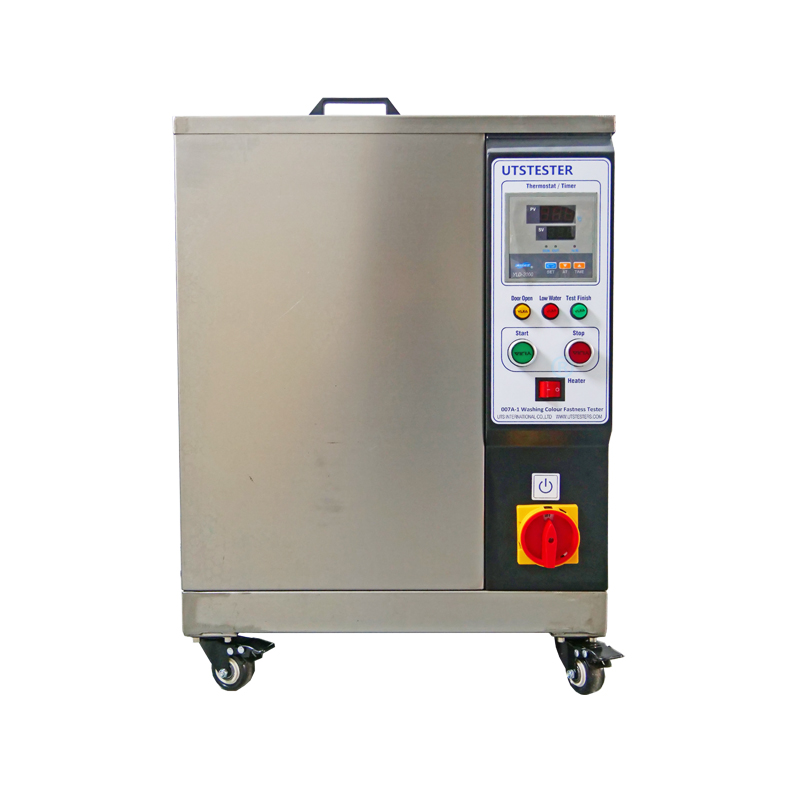 +86 152 6060 5085
+86 152 6060 5085
 +86 152 6060 5085
+86 152 6060 5085
Blog
Catalog
Latest Blog
The water-washing color fastness meter is used to test the color change of colored fabrics after being washed with solution to detect the color fastness of the fabric to washing.
The main parameters:
1. Working temperature: up to 100±2 degrees Celsius;
2. Rotation speed: 40±2r/min;
3. Test cup size: (national standard) 550ml, (American standard) 1200ml;
4. Timing range: 1~999min;
5. Setting temperature range: room temperature~99℃;
6. Temperature control fluctuation: <±1℃;
7. Number of test cups: (national standard) 20, (American standard) 10
standard test:
ISO105-C01-C05-1989 "Textiles - Color fastness test - Color fastness to washing: Test - Test 5", EN20105C01-C05-1992 "Textiles - Color fastness test - Color fastness to washing: Test 1 - Test 5" , DINEN20105C01-C05-1993 "Textiles - Color fastness tests - Color fastness to washing: Test 1-Test 5". AATCC172-2002 Color fastness to household washing and oxygen-free bleaching", GB/T3921.1-5-1997 "Textiles - Color fastness test·Color fastness to washing: Test 1-Test 5".
Test principle:
The color fastness to washing test is to laminate a textile sample to one or two specified pieces of fabric, place it in soap solution, stir mechanically under specified time and temperature conditions, and then rinse and dry. Use the gray sample card to evaluate the discoloration of the sample and the staining of the backing fabric. There are five test methods for color fastness to washing. The main difference lies in the test temperature and time. Everything else is basically the same.
Test trial:
1. Put the combined sample into the specified sealed container, and put the washing test solution in the container with a mass ratio of 50:1 to the combined sample;
2. Rotate the sealed container with a radius of 45mm and a rotation speed of 40r/min, and perform mechanical stirring at the specified temperature and time;
3. After the test, take out the sample, wash it twice with cold third-grade water, then rinse it in flowing cold water for 10 minutes and squeeze out the water;
4. Expand the combined sample so that the sample and the lining are connected by only one suture, and hang it in an environment not higher than 60°C to dry;
5. Use the gray sample card for discoloration to evaluate the discoloration of the sample, and the gray sample card for staining to evaluate the staining of the lining fabric.

Email: hello@utstesters.com
Direct: + 86 152 6060 5085
Tel: +86-596-7686689
Web: www.utstesters.com